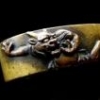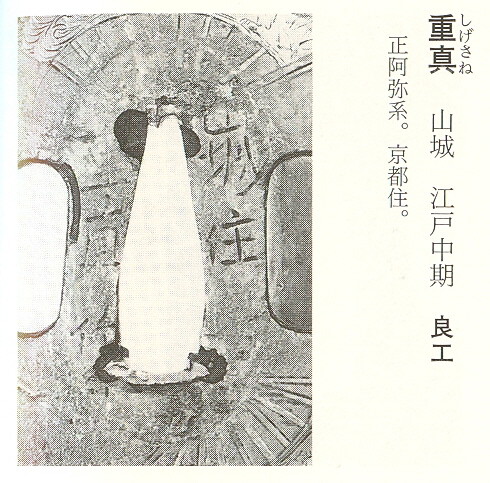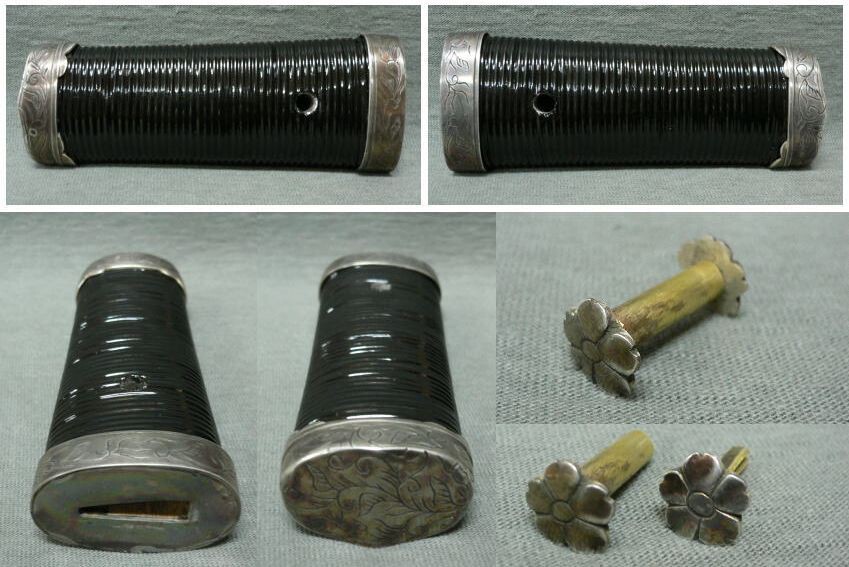-
Posts
2,984 -
Joined
-
Last visited
-
Days Won
29
Content Type
Profiles
Forums
Events
Store
Downloads
Gallery
Everything posted by Pete Klein
-

Tampa Show Feb. 9-11
Pete Klein replied to b.hennick's topic in Sword Shows, Events, Community News and Legislation Issues
Just my two cents here but I believe there's a natural reluctance to put sowrds out on a table top which may be worth in excess of $100,000 to have anyone who comes along ask to handle. How do you say no? It becomes a difficult dance not to offend. A slight accident could well cost many thousands. I really can't blame them for being a bit careful. If you are really interested and able to buy you get introductions and it all opens up. And if you help place the introduction it adds to your panache so where's the hurt in that? Fittings are a bit easier as for the most part it would be difficult to damage one (although easy to rip off) and generally none over $20,000 are out anyway. When one dealer knows you're serious and a player then trust me they all know. I am not a collector of juyo grade Nihonto but I have seen many hands on because I took the time to get to know those who deal in them, keep in contact with them and never became a pest about it. It takes a lot of patience and time but they know who is serious and not and are all pretty decent guys. It's just how it's done. -
I believe this was on http://www.premi.co.jp/ originally as the pictures ring a bell. It is probably the dealers listing and is legit. I would imagine it has a high reserve as I remember the asking price was around 2.5 MY or something like that. It's nice.
-
He had mentioned he was moving back to either Korea or Japan. It was awhile ago now.
-
AHH -- ya beat me! We were both working on it at the same time.
-
宮本 -- yup, Miyamoto, 1926 Mino Seki I believe.
-
Hello Simon -- Interesting question. As a general rule I would say ~3 inches is the delineation between the two when considering the Dai - Sho. However, having said that it's not so easy. To understand the tsuba you have to understand the evolution of the sword along with how it was used and worn. First, the tsuba was basically used to keep the hand from being forced onto the blade in use, therefore the size is not all that relevant for this parameter. Second and more importantly for our discussion, it must act as a counterbalance for the blade in hand to allow function. This will vary by type of use; a tachi being used from horseback will have different requirements than a katana used with two hands at ground level as opposed to an earlier uchigatana used in single hand technique by a foot soldier. If you visualize a Kamakura Jidai tachi well over thirty inches in length you will see the need for a larger and heavier tsuba to counterbalance the blade in hand (and also slung for that matter as otherwise it would tend to fall vertical to the rider). A shorter more slender Muromachi Jidai uchigatana used in single hand technique would require a smaller lighter tsuba (think Kanayama). An Edo Jidai Shinto/Shin Shinto Katana would require a larger and often heavier (thicker) tsuba to balance a longer and heavier sword. Material used will also affect size. And on and on. A good read is 'Tosogu no Kigan' by Sasano which although in Japanese has English explainations to the pictures and offers quite a bit of information on his theories on this subject. Some will argue he was a bit too radical in his age estimates but the overview of knowledge is good. All of this also helps to explain why tanto and koshigatana often had Aikuchi type koshirae without tsuba along with the way they were worn being thrust into the waist (koshi) band as a tsuba would tend to be uncomfortable in this position. PS: I hope this helps to answer the question as to why we study this field also -- it's just very intersting history too!
-
The sukashi is called 'Tea House Window'. The rather heart shaped one is in the form of a serving platter used in tea ceremony and for other uses in entertaining.
-
You would have to ask someone in the field, Ford perhaps, as now you are looking for manufacturing techniques. The only text I have seen is in Japanese and I'm not really certan if it even goes into this. You would have to speak to a Japanese book dealer on it. I do know that the old 'mercury evaporation' technique is extremely dangerous and unless you want to end up having tea with Alice you'd better stay away! LOL
-
-
John -- tsuba is by Yamashiro Kuni (no) Ju Shigesane, Shoami, Kyoto, died ~1650 - 1700, Haynes 08450.0, mei is in Kinko Meikan pg. 126.
-
PS: I was able to find fourteen variations of mei and kao in that catalog for Torigoye. Unfortunately the files are too large to post but if anyone is interested in this type of technical information pick up a copy as it is the best of the ten produced.
-
Milt -- the appraisal was written by Kuwabara Yojiro but I know what you mean about the seal. The Haynes #7 catalog has the most examples of the different styles of Torigoye's seals and kaos.
-
Doo Moo arigatogozaemasu. Thank you very much Koichi! This is greatly appreciated.
-
-
Please re-read my post -- I said, 'at least'! The last tsuba offered by an on-line dealer was apprx. two years ago by AOI @ 8,500,000 JY being the 'KANO' kanji tsuba. It is not a market for the weak of heart.
-
I believe it's also worth mentioning that if it was genuine it probably would never have made it out of Japan and the price would have been at least $100,000. I have seen many Sato Kansan hakogaki and there has been much rumor as to them often having a certain lack of validity that I believe it is always best to go by certification on any higher end (aka = expensive) piece unless you are schooled to such an extent that you can truely kantei the piece yourself. The actual set that this one was copied off of is in the Natsuo Kano book and Ford is quite correct -- this is a poor copy at best.
-
It could be the kashira from an aikuchi mount without ito -- if there isn't a wrap then there is no need for the shitodomeana. -- also -- this is a nice example of inyokan style menuki which are used as mekugi.
-
So I guess what you're saying is that you kan and we kan't?
-
http://www.sanmei.com/shop_e/enter.html
-

Crass Commercial Message
Pete Klein replied to Rich T's topic in Auctions and Online Sales or Sellers
Hi Brian -- well, as I can't seem to get Rich to bite on this (or any one else for that matter) the three plate construction is the key on this one to Akasaka. I have an Akasaka with almost identicle tagane and thought the exact same thing at first but other criteria prevailed. Point is that these are clues in a process of differentiation and none (aside from signitures) are really so specific as to denote a specific school. PS: I find the kebori interesting on this piece. -

Crass Commercial Message
Pete Klein replied to Rich T's topic in Auctions and Online Sales or Sellers
Brian -- I would just like to know what his justification is for this piece to be Akasaka as opposed to Tosa Myochin as it has what appears to be tagane mei of the Tosa type. Perhaps the is an attribute we are missing which will illuminate the kantei? -

Crass Commercial Message
Pete Klein replied to Rich T's topic in Auctions and Online Sales or Sellers
Yes -- I was thinking the same thing -- especially with the tagane mei. Perhaps you would be so kind as to explain?






